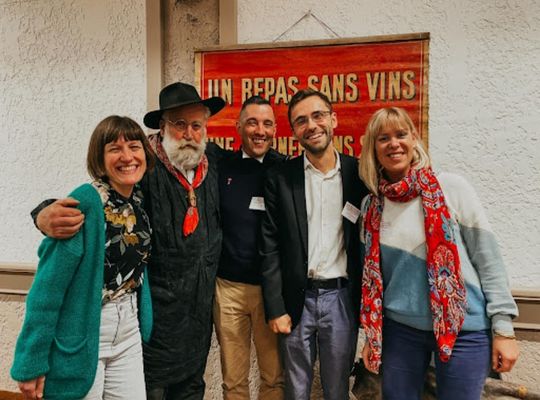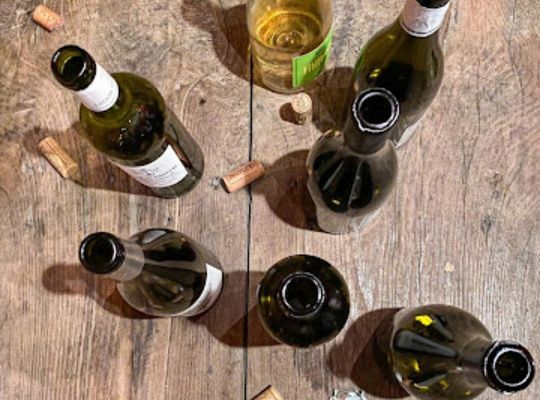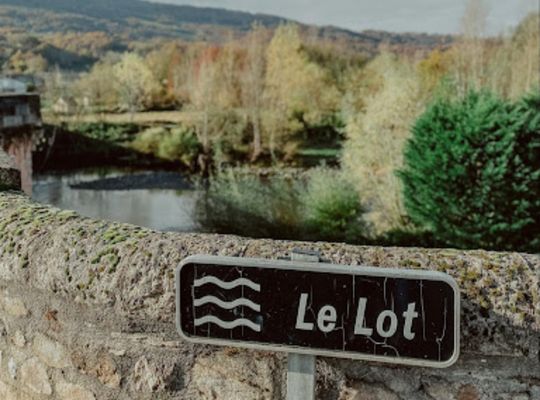Super Early Bird Ends
30 April 2025
Warehouse Deadline
30 Sep 2025
Judging Dates
7 October 2025
Winners Announcement
28 October 2025

Did you know that there are ancient grape varieties native to France that are making a comeback? These grapes have been around for centuries, but changes to the climate and grape-growing conditions have led some famous wine regions to explore using them as a possible solution. A group of dedicated winegrowers and passionate enthusiasts known as the “rencontres des cepages modestes” is working hard to preserve these grapes. Thanks to their efforts, you can now find wines made from these rare varieties in new masterclass curriculums, bottle shops, and restaurants throughout France.

In this blog article, we will discuss five of these unique French grape varieties. We'll tell you a little bit about the history of each variety and the style of wines they typically produce. So, without further ado, let's get started!
The Rivairencs (also known as Ribeyrenc) are wine grape species that originate in the Languedoc-Roussillon. There are four distinct types of Rivairenc: gris, blanc, rosé, and noir (black). It is low-yielding and late ripening, but susceptible to fungal disease. Cinsault is a close relative that was formerly cultivated on some of the most well-known plots between Nîmes and Montpellier.
The Bourboulenc grape is a white variety whose fate differs from the other grapes on our list. Bourboulenc is part of the Châteauneuf-du-Pape AOC's historical vines. I guess you could say it is still a part of the band but never plays any solos as Bourboulenc is rarely vinified on its own. Bourboulenc is a thick-skinned, rose-colored fruit that is often used in skin contact winemaking (orange wines) and is usually, IGP labeled.
[[relatedPurchasesItems-45]]
Douce noire is a rare grape that hails from the Soavie region. In this region, Douce Noire produces a light-bodied red wine of close to 11% abv. In Argentina, it is known as Bonarda! However, the expression is more powerful in Mendoza. In the Alpine wine regions of France, winemakers are granted more creative leeway with IGPs and AOCs when it comes to blends and single varietals. Meanwhile, increased experimentation has led bolder winemakers to explore this unique species in order to create something new. Slowly, but surely, Douce Noire is appearing in specialty wine shops throughout France and Paris. Douce Noire is becoming increasingly popular.

Chatus, also known as corbesse, is a black grape that used to grow in great numbers on the famous hill of Hermitage in the Northern Rhone. It was a superb grape in the Vivarais region but was devastated by phylloxera. Chatus vines are strong and can grow in even the poorest sandstone and granite soils. This makes them less likely to experience coulure (loss of clusters) or gray rot. The grapes they produce are deep-colored and rich in flavor.
Mancin des palus, a red grape, is another name for Tarnay. In the early 18th century, Mancin was dominant in what are today the Grand cru classés of Graves and Médoc. Château d’Issan in Margaux had a considerable percentage of mancin its blend during the ranking of Left bank Bordeaux holdings in 1855. Today, winemakers are blending Mancin with other rare varietals in Bordeaux. The success of native wild grapes adapting to climate change has led some experts to believe that this approach may revolutionize the way we perceive and taste Bordeaux wines.

Thirsty yet? Let's get the wine list! The efforts of dedicated wine producers like the ones below have helped these vines make a comeback. I encourage you to open your mind (and your palate) to try some of these wines.
Lutz by Le Pech d’André in Minervois (bourboulenc)
Domaine Salel-Renaud Syramuse 2019 IGP Coteaux de l’Ardèche (chatus)
Château Tire Pé, L’Échappée 2018, Vin de France (Castets and Mancin)

Want more information, feel free to reach out to me, Emily Lester. If you find yourself in Paris, be sure to visit Oenovino's Masterclasses. The institution offers Cepages Modeste's tastings and seminars in both English and French. The next Masterclass is on November 7th in Paris 11eme.
Want to purchase bottles? Visit the Vitis vinifera cave where owner Gregory Langevin specializes in stocking the “cepages modestes” wines.
Do you have a favorite on our list? Let us know in the comments below! And be sure to check out our other blog articles for more interesting wine topics. Until next time, happy drinking!
Instagram Tags:
LinkedIn Tags:
https://www.linkedin.com/in/juleslamon/ (Owner of Paris Wine School)
https://www.linkedin.com/in/philippelelong/ (winemaker)